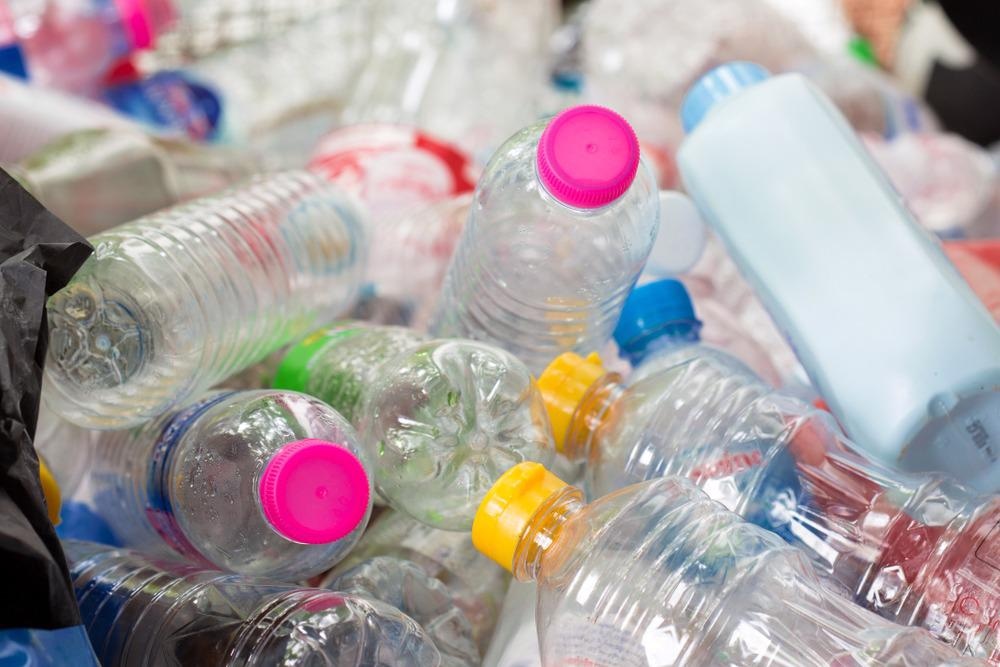Plastic waste pollution is a pressing ecological threat, with the problem being aggravated by the use of disposable plastics during the COVID-19 pandemic, from plastic takeaway containers to disposable medical supplies such as test swabs. Many remediation strategies have been employed to degrade plastic waste, and a new study published in Sustainability has explored the use of insect species.

Study: Worming the Circular Economy for Biowaste and Plastics: Hermetia illucens, Tenebrio molitor, and Zophobas morio. Image Credit: Teerasak Ladnongkhun/Shutterstock.com
A Setback to Plastic Waste Remediation Efforts
Whilst there has been progress in reducing the amount of plastic consumed in recent years, utilization of alternative materials, and increasing recycling efforts, the COVID-19 pandemic has caused a severe setback to these efforts. Plastic takeaway containers, panic buying leading to increased food waste, personal protective equipment, testing kits, and single-use medical swabs have all contributed to an exponential increase in plastic pollution entering the environment.
The food market itself is predicted to grow at a compounded annual rate of 8.2% between 2020 and 2024, and this is hugely detrimental to environmental stability in terms of food wastage and plastic containers. Both reduced business and overbuying have contributed to growing food waste both in restaurants and at home. All this has set back the UN’s Sustainable Development Goals, particularly SDG 12, which aims to reduce food waste at retail and consumer levels by 2030.
Even before the pandemic, 1.3 billion tons, or almost a third of the total food produced globally for human consumption, was wasted. Forty-nine million tons of plastic per year is used in Europe alone, 40% of which is used for packaging. Once in the environment, plastic waste does not biodegrade easily, causing huge issues with landfilling and marine pollution. Only 4% of plastic waste is currently recycled, and polyethylene bags and polystyrene cups take 500 years to break down.
Burning plastic waste leads to increased carbon emissions. The problem is compounded by decomposing food waste, which releases methane, a potent greenhouse gas. Many recycling and remediation strategies have been proposed, including physical, chemical, and biological methods. Some of these strategies can be problematic in terms of cost, complexity, efficiency, and scalability.
Using Insects for Plastic Waste Remediation
Of the biological remediation strategies, which include microbial colonies which can break down complex organic and inorganic matter, insects have emerged as a potential alternative method. The new paper in Sustainability has explored the use of these biological organisms for plastic and food waste remediation strategies.
Further Reading on AZoM: An Overview of Polymer Upcycling
Utilizing insects can potentially help to achieve a zero-waste, circular economy. A zero-waste approach aims to keep waste from entering the environment, whilst a circular economy approach regenerates the environment, helping to achieve greater sustainability. One notable example of a zero-waste circular strategy using a common species of insects is the use of cockroaches. With their insatiable appetites, they can quickly clear organic waste, and are valuable food sources in some communities.
A greater understanding of etymology has led to the investigation of other insect species for the biological remediation of plastic and food waste. Both black soldier fly (H. illucens) larvae, mealworms (in particular, T. molitor), and superworms (Z. morio) have emerged as attractive candidates for this purpose.
H. illucens is well-known as a species that can efficiently degrade organic compounds and breed quickly, with adult flies laying vast amounts of eggs. Z. morio and T. molitor can feed on plastics, notably polystyrene and polyethylene, which are the main components of plastic waste from the food industry. Utilizing these species together will make possible the design of a self-sustaining natural solution for landfills and dumpsters to dispose of food waste-contaminated plastic waste.
Additionally, the authors have stated that such a system would fit with the concept of a circular economy. H, illucens can be utilized for biowaste treatment with frass as a fertilizer. Insects can then be utilized as feedstock for plants, animals, and humans, as well as commercial extraction of compounds such as chitin for the medical industry and melanin for use as pigmentation.
The Future
The study published in Sustainability has provided key research into insect bioremediation of plastic waste from the food industry, which is traditionally hard to recycle and causes immense environmental damage when it is disposed of. In line with the aims of the UN’s Sustainable Development Goals and the circular economy concept, such a system would drastically reduce the problems of plastic and food waste and pollution and valorize waste streams, facilitating a much more sustainable food industry in the future.
Further Reading
Khuan, Z.J et al. (2022) Worming the Circular Economy for Biowaste and Plastics: Hermetia illucens, Tenebrio molitor, and Zophobas morio [online] Sustainability 14(3)1594 | mdpi.com. Available at: https://www.mdpi.com/2071-1050/14/3/1594
Disclaimer: The views expressed here are those of the author expressed in their private capacity and do not necessarily represent the views of AZoM.com Limited T/A AZoNetwork the owner and operator of this website. This disclaimer forms part of the Terms and conditions of use of this website.